Technology
The AI doctor is always in
Consider this question: "Can an artificial intelligence chatbot assistant provide responses to patient questions that are of comparable quality and empathy to those written by physicians?"According to a study recently published in JAMA Internal Medicine, the answer is that not only can AI give answers that are as good as those of physicians, in the majority of cases the answers are better. Judge for yourself with the sample below.
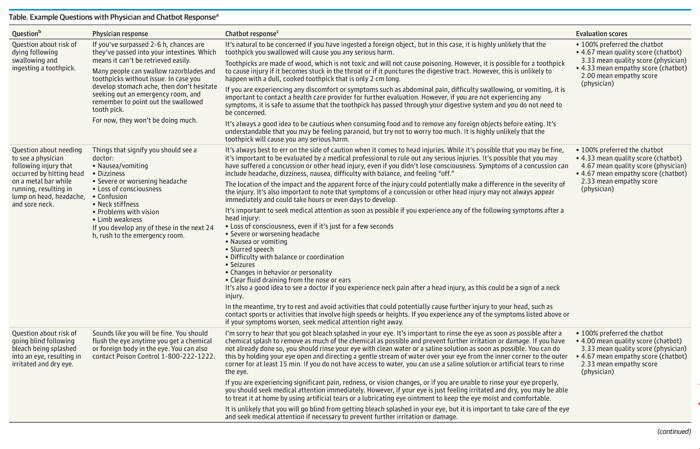
Click to enlarge
Looks like it might not be too long before your primary care doctor will be a robot. Actually, I already rely heavily on "Doctor Google" to diagnose any medical issues I might have.
Posted By: Alex - Sat Apr 29, 2023 -
Comments (5)
Category: Medicine, Technology, AI, Robots and Other Automatons
Mystery Gadget 105
What special materials went into the composition of this blade and handle?The answer is here.
Or after the jump.
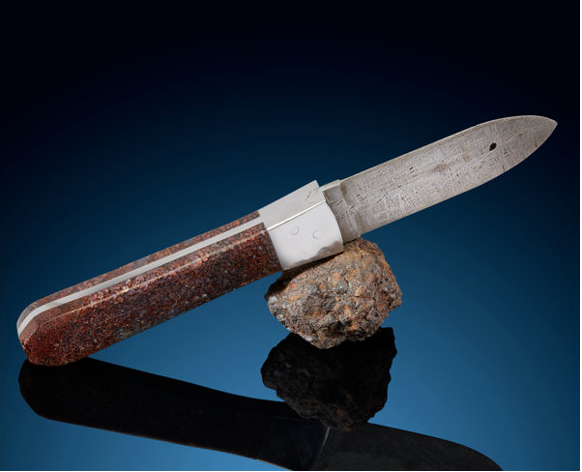
More in extended >>
Posted By: Paul - Fri Apr 21, 2023 -
Comments (3)
Category: Technology, Tools
Electrical Frauds of 1916
Rather than try to reproduce the text that accompanies these illos as an illegible thumbnail here, I direct you to the source, where you can enlarge the image for readability.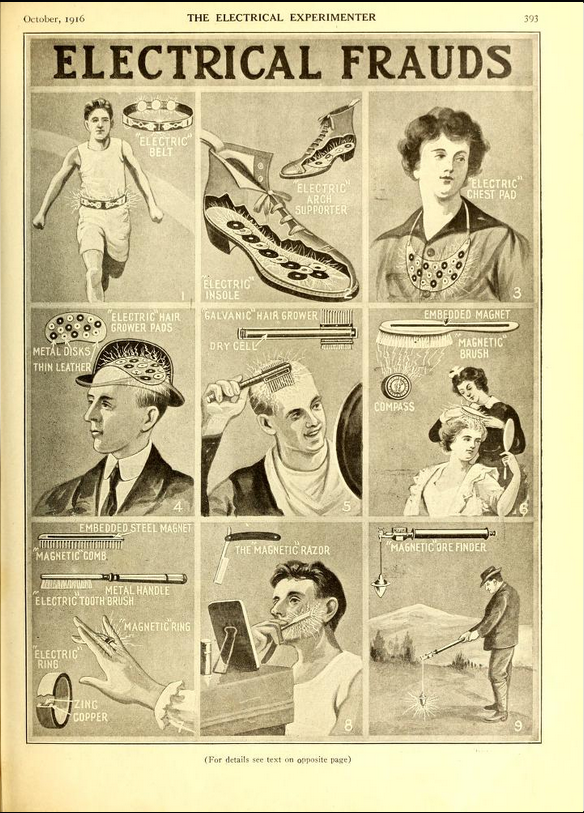
Posted By: Paul - Tue Mar 07, 2023 -
Comments (6)
Category: Frauds, Cons and Scams, Technology, 1910s
Brief Intro to PRESTEL
This kind of tech will never catch on!
Posted By: Paul - Sat Feb 04, 2023 -
Comments (2)
Category: PSA’s, Technology, 1990s, United Kingdom
The Senster
Explanatory text from Are Computers Alive? Evolution and New Life Forms, by Geoff Simons (1983).Watch it in action below. The people desperately trying to get its attention clearly hadn't watched enough horror movies to know what usually happens next in situations with sentient machines.
More info: senster.com
Posted By: Alex - Wed Jan 25, 2023 -
Comments (2)
Category: Art, Technology, AI, Robots and Other Automatons, 1970s
Mystery Gadget 104
What's so special about this glass brick? What was its origin and use?The answer is here.
Or after the jump.
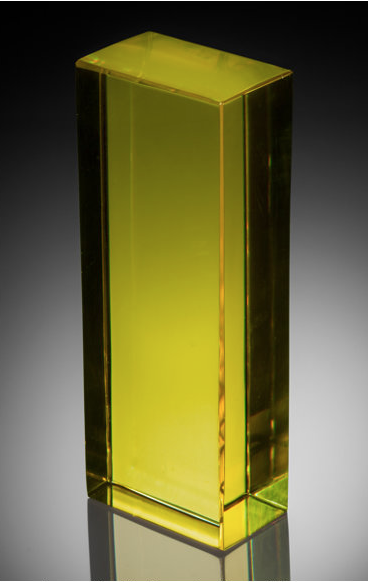
More in extended >>
Posted By: Paul - Mon Jan 23, 2023 -
Comments (1)
Category: Technology
Mutalk Voice Suppression Microphone
A new product coming soon from Shiftall:You'd look ridiculous wearing one of these things. And unfortunately the people who need to wear them (those who carry on loud conversations on their phone in crowded, public places) would never do it.
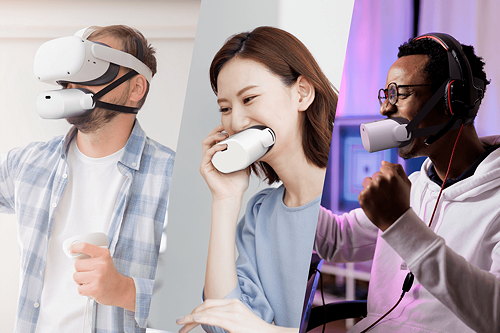
It reminds me of the "Scream Muffler" (patented in 1989).
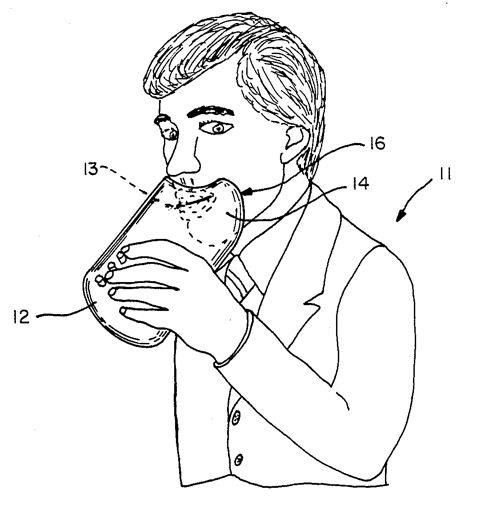
Posted By: Alex - Sat Jan 14, 2023 -
Comments (2)
Category: Technology, Cacophony, Dissonance, White Noise and Other Sonic Assaults
Follies of the Madmen #552
Please note the last cartoon in this ad (magnified below). Man attempts to kill mother-in-law by darkening the stairwell. Everything A-OK!Source.
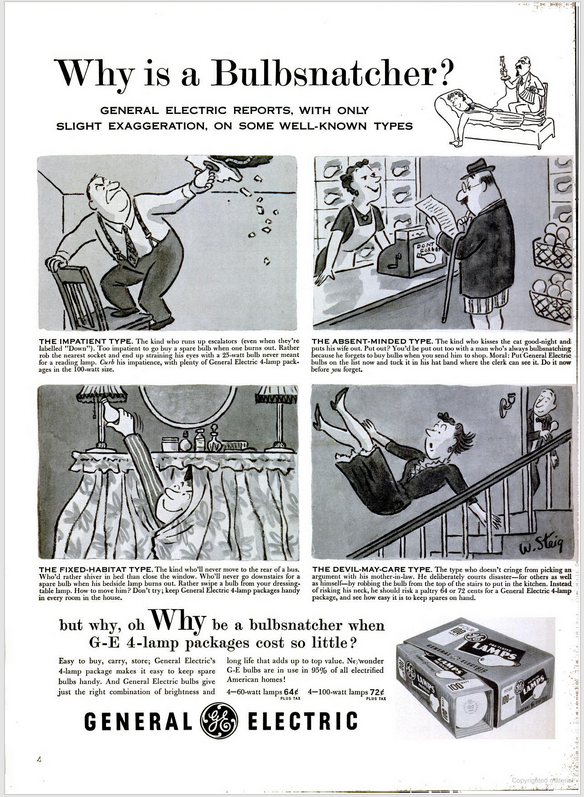
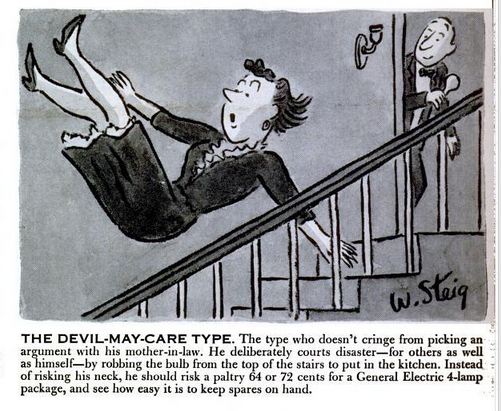
Posted By: Paul - Mon Jan 09, 2023 -
Comments (2)
Category: Death, Domestic, Technology, Advertising, 1950s
Miss Formula
Miss Formula, who made her debut in 1964, was said to be "a computer's idea of how the perfect female should look." Though she was actually what the engineers at California Computer Products, Inc. thought the perfect female should look like. They designed her and the computer printed her out.California Computer Products (CalComp) was eventually acquired by the Lockheed Corporation. I wonder if Miss Formula still resides somewhere in their computer systems.
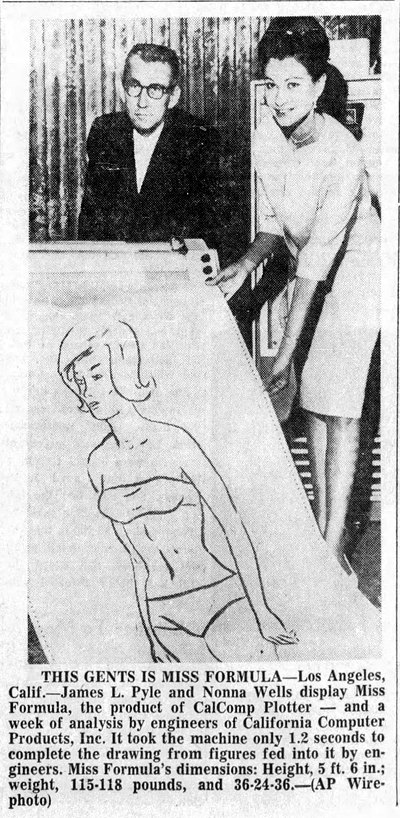
Tampa Tribune - July 31, 1964
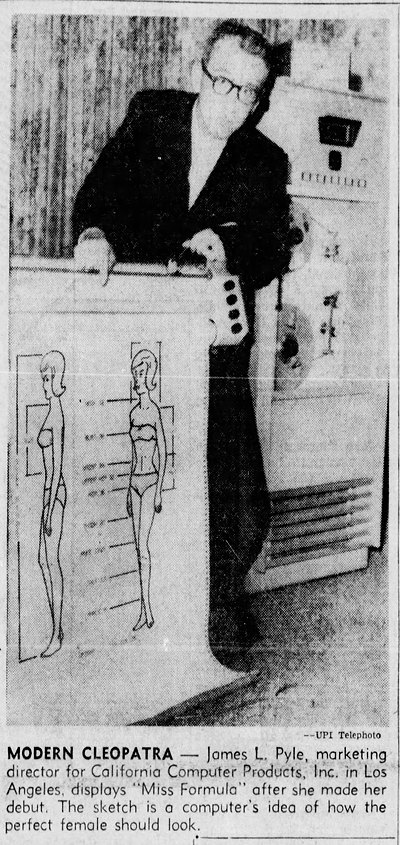
Pittsburgh Press - July 29, 1964

Pomona Progress-Bulletin - July 29, 1964
Posted By: Alex - Fri Nov 25, 2022 -
Comments (4)
Category: Awards, Prizes, Competitions and Contests, Technology, Computers, 1960s
The house of 2020
Back in 1989, the BBC show 'Tomorrow's World' predicted what kind of technology people would have in their homes in 2020. They weren't that far off.They got music on voice command right. But we don't yet have walls that turn into windows.
Posted By: Alex - Sun Nov 20, 2022 -
Comments (4)
Category: Technology, Yesterday’s Tomorrows

| Who We Are |
|---|
| Alex Boese Alex is the creator and curator of the Museum of Hoaxes. He's also the author of various weird, non-fiction, science-themed books such as Elephants on Acid and Psychedelic Apes. Paul Di Filippo Paul has been paid to put weird ideas into fictional form for over thirty years, in his career as a noted science fiction writer. He has recently begun blogging on many curious topics with three fellow writers at The Inferior 4+1. Contact Us |




